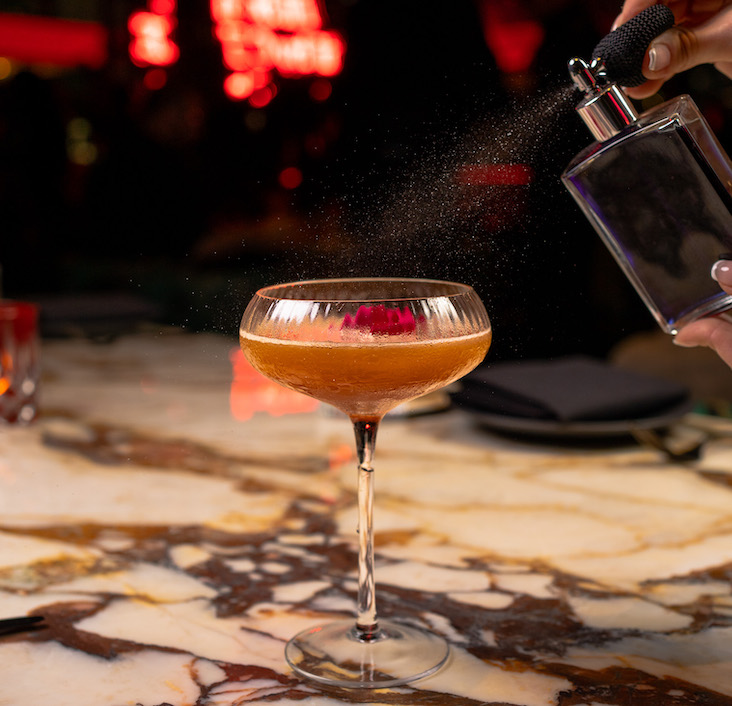Sometimes a wine list needs more than brand names, vintages and prices.
Can a well-turned phrase transform a slow-moving wine list into a sales leader at the table? When restaurant wine managers prepare a list that includes tasting notes and descriptives, the results vary, but some think it’s a good way to make a list bloom.
“When I started including descriptives on the list, it increased wine sales and spread the sales out throughout the list,” says George Howald, general manager of City Cafe, Dallas, where a list of more than 200 wines, primarily American, has helped create a gathering place for wine lovers. “There’s no way for every person working the floor to remember every detail about each wine, and some people actually don’t want any wine interaction, they just want to sit back and enjoy their wine. Creating this sort of list definitely helps.”
In general, while some wine professionals are enthusiastic about including at least some descriptions promoting particular listings, few of the top wine-oriented restaurants bother. Some sommeliers and wine stewards report that creating comprehensive descriptives for their lists, especially massive compendiums that are frequently altered and updated can be more hassle than it is worth.
“I think because of the nature of our operation including much descriptive information would be difficult,” says Tim Kilcullen, wine steward at Philadelphia’s Panorama Ristorante, where a 400-wine reserve list is amended by an additional 120 wines sold by-the-glass from their massive cruvinet system.
Kilcullen changes Panorama’s list weekly, making the creation of a comprehensive set of descriptives as part of his wine program a daunting task. But he has toyed with the idea of altering the way his list is organized. Now, Panorama’s wines are gathered together on the list by state and nation; Kilcullen thinks a list that takes into account general wine characteristics might work better.
“I don’t know how much it tells people who don’t know about the wine that it is from Pennsylvania; if we label the wines by their style instead, it might not be so overwhelming to the casual wine drinker.”
Kilcullen is considering grouping wines under more general descriptives: “Light, crisp and dry,’ or “Medium-bodied, fruity and soft” are possibilities, although he muses that even such apparently innocuous wine terms as “dry” and “sweet” may not always dispel confusion. “There’s a saying in the restaurant business; ‘Americans always say they want dry, but what they really want is sweet.’ We like some residual sugar in our wine.” Even with the possibility of creating more confusion, Kilcullen entertains some descriptive-based reorganization.
Some operations with strong wine programs have already taken steps toward recreating the traditional wine list through flavor and style groupings.
At East Hampton Point, one of East Hampton, NY’s trendy waterside scenes, the 100-wine multi-national wine list is grouped by just such characteristics. On the one-page white, sparkling and blush wine list, roses and rieslings are listed under “Fresh and Fruity,” while chardonnays and sauvignon blancs appear both in the “Light and Dry” and “Medium Bodied” groups, and California chardonnays dominate the “Rich and Full Bodied” section. The red wine page is divided into three categories: “Light Bodied,” “Medium Bodied” and “Full Bodied.” Everything from a $19 1995 Pauvert Muscadet de Sevre et Maine and a $22 1996 Durdilly Beaujolais to a $170 Krug Rosé N.V. appear in this fashion, with no regard for area of origin or grape variety. While the list doesn’t provide definitive descriptive notes, its organization does allow customers with spotty wine knowledge to order wines by the features they do recognize, an option some consultants say may be helpful in moving unfamiliar wines.
BOUTIQUE SELLER
At smaller, intimate restaurants where the reputation and recommendations of the owners or chef carry great weight, taking the time to describe wines on the list may pay off. “Using our short descriptives helps a lot,” says Tina Kwok, co-owner with husband Kirk Webber of Cafe Kati in San Francisco. “We have a lot of hard-to-find wines from boutique wineries in Napa and Sonoma, and people who know and trust Kirk’s taste will try it based on our short notes.”
Cafe Kati’s list of 50 or so wines includes brief, five-or-six word notes that stick to illuminating flavor profiles. Cafe Kati’s list avoids the big and best-known California wineries, specializing in vintages from smaller, boutique producers that customers might not be aware of or have not been able to locate. Being able to promote these less familiar but high-quality wines through the list aids the Webbers in maintaining and moving a well-tuned list.
Howald of City Cafe says restaurateurs with a reputation for a wine sensibility must walk a fine line when developing a descriptive list. “I don’t want to be intrusive, but I do want to include enough information about the wine to be helpful. Winemakers often come here and leave me great informational pieces about wines I’m excited about, and I want to be able to share some of that with the public. It’s interesting to see how to tweak the list and play with descriptions.”
The City Cafe list, which groups brief descriptions of some of the wines in a running commentary at the bottom of each page, allows Howald to promote slow-sellers and remove descriptions about wines that move well.
This table-side marketing system works well, he says, but he doesn’t bother with descriptions on the by-the-glass list. Servers are the best marketers for this, he says, partially because by-the-glass shoppers are more likely to buy based on price considerations, rather than flavor or style.
Gathering the information to use is easy enough, he says. “Suppliers and distributors are more than happy to provide a large amount of information. They’ve gone to great expense to create their material.” But he cautions that taking on a descriptive list takes a lot of work and a commitment to keeping it fresh as the wine list changes.
DRINKING, NOT READING
But there are those who avoid the idea of tackling even groupings, not wanting to change a traditional system and possibly burdening customers with too much printed information. To them, wine is sold best by the efforts of a knowledgeable staff and through a restaurant’s reputation for value and quality.
“Very few restaurants get into descriptions here,” says Debbie Zachareas, wine manager of Eos Restaurant and Wine Bar. “You can get away with it if you have a short one page list or with specials, but at a place like ours, it’s hard to get them all on the list.”
While time is a factor, Zachareas basically believes, like Kilcullen, that customers should spend their time enjoying whatever wine they do order, rather than perusing the list endlessly and tying up tables. But she says she’s seen one-page lists with brief descriptions that she finds very helpful.
Zachareas, perhaps because she knows her wines, prefers the established category listing and says she feels a little unsettled when browsing a list where flavor and style characteristics take preference. But a recent conversation with a San Francisco food writer opened her mind somewhat. “The writer said that people say all the time that they want the lists laid out in a way that they can select for their favorite style and type of wine. Ultimately, there are very many theories of wine service. It’s what works best for the house that counts.”




